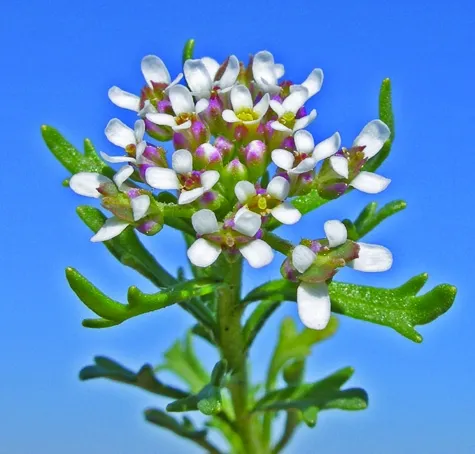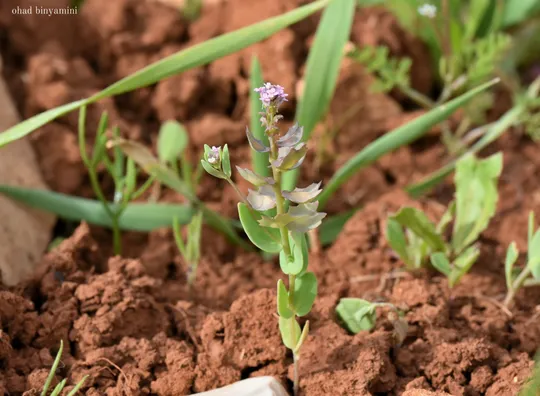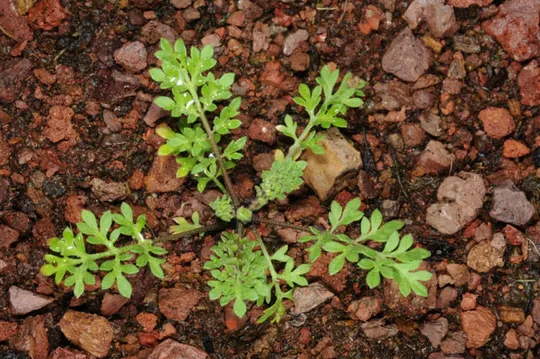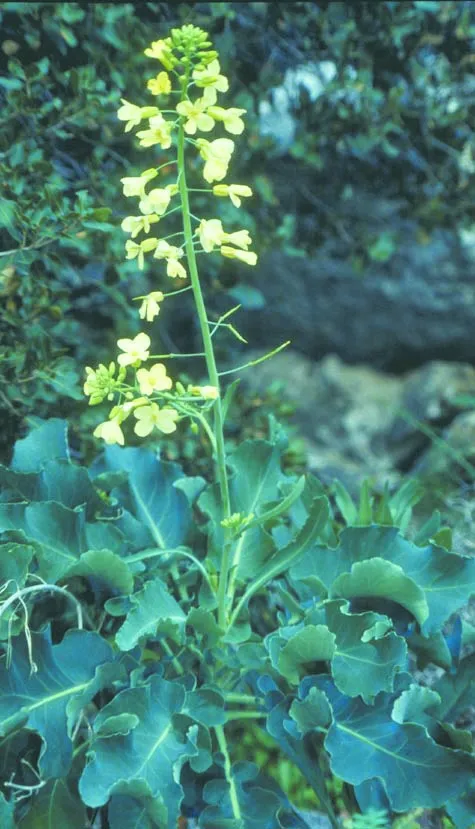Andrzeiowskia cardamine
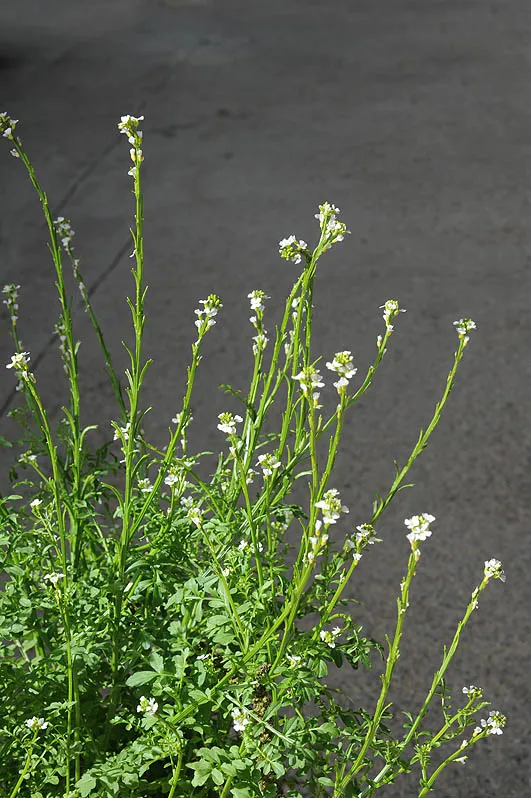

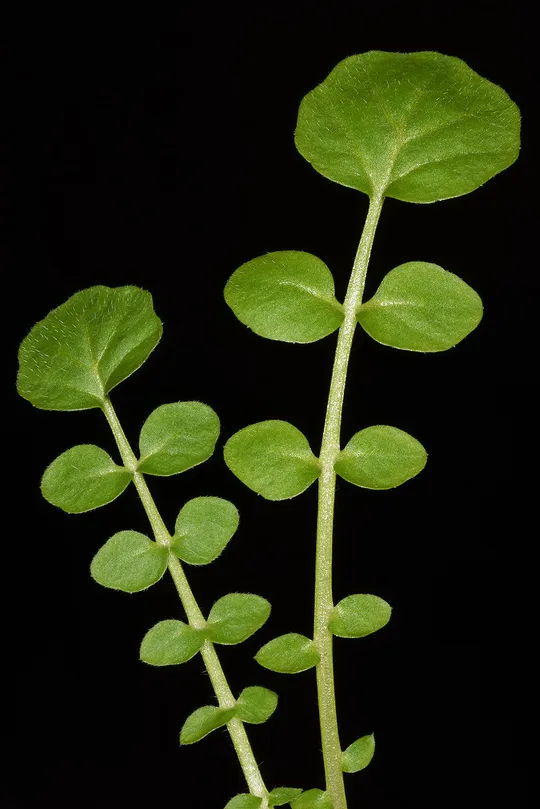
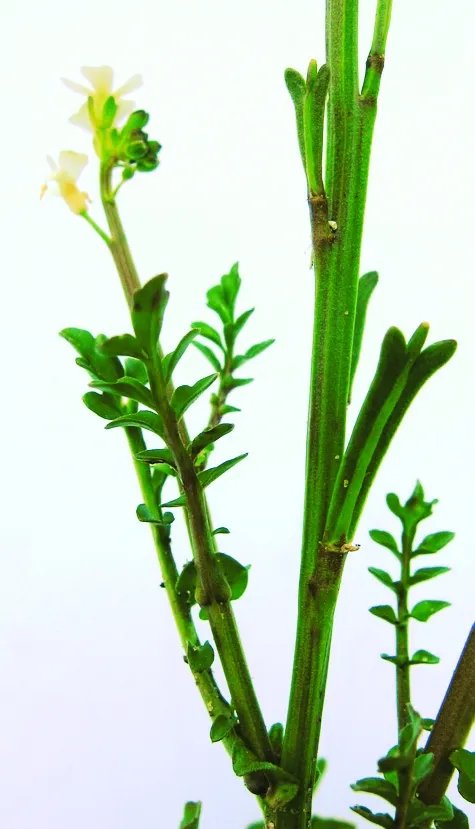
Andzeiowskia cardamine was
found by Yariv Ivri in a water pond in the Mesil Asnia flow channel in the northern Golan, at an
altitude of 920 meters, about 3 km north of Alone HaBashan, about 6 km south of Qunetra on May 27, 1983. All efforts to find other sites in the Golan where
A. cardamine
grows were unsuccessful.
Moist depressions at the edges of water bodies
and seasonal flow channels, in a microhabitat that dries up rapidly in late
spring and remains dry throughout the summer. Water flows in Mesil Asnia
throughout the winter, and drains the Mumsia Springs located in the
upper drainage basin of the Zavitan Stream. During the summer, the flow is greatly reduced, and the adjacent pool dries up almost completely. The Asnia pond vegetation
zones are visible from the water to the rocky flats. Andzeiowskia cardamine grows in the third zone, in a
semi-humid area dominated by mixed annual and perennial herbaceous vegetation, e.g.
Anthemis chia, Plantago lanceolata, Trifolium fragiferum, Antinoria
insularis, Pilgerochloa blanchei and Gaudinia fragilis.
Andzeiowskia is a monotypic genus, close to the genera Lepidium,
Thlaspi, Capsella, and Hymenolobus. The unique form and structure of its fruit gave this taxon an independent
status. Genera with a
single species are common in the Cruciferae
(Brassicaceae) family, especially in annual
species. Annual species with a short life
cycle presumably have an accelerated evolution
rate with selection and differentiation under stress
conditions. Consequently, there are many annual monotypic genera in the Middle East, e.g. Anastatica, Zilla,
Notoceras and Anchonium.
· Andzeiowskia
cardamine grows
on
a single site in the country, in the northern Golan Heights. Despite of many
search efforts by botanists no other sites have been
found.
·
No rare species survey was conducted in the Golan Heights, therefore there is no definite information
regarding its population
size. The population
in the 1980s is estimated to have numbered tens to hundreds of plants.
The population was found at the site in 2004 as well.
· The site is located within the proposed Mesil
Asnia Nature Reserve. Within the reserve there is uncontrolled cattle grazing, which threatens A. cardamine and many other rare and red species that grow there.
A thorough field survey of all the seasonal bodies of water in the central and northern Golan
Heights should be conducted to locate additional Andzeiowskia cardamine populations. The status of Mesil Asnia should be changed to a declared reserve
to
protect the unique assemblage
of species growing in it. Grazing should be strictly controlled to prevent overgrazing. The population of A. cardamine at the site should be
monitored three times a year and the
size of its seed bank estimated.
Andzeiowskia cardamine has an eastern Mediterranean
distribution limited to the area between Israel and Greece:
northern Israel, Lebanon (Tripoli), western and southern
Syria, Thrace
in Greece and Cyprus (?).In Turkey, it was collected a few times in the north, west and south, but is extremely rare.
The species is very rare throughout its distribution area, which is probably why it has no English or Arabic vernacular name.
Andzeiowskia cardamine is an annual monotype in the Cruciferae (Brassicaceae) family,
which grows at only one site in Israel – Mesil Asnia in the northern
Golan Heights. In neighboring countries (Turkey
and Syria) it is also very rare, with a scattered distribution pattern. It is a peripheral
species, and Mesil Asnia is the southernmost limit of its
global distribution.
שמידע,א., פולק, ג., עברי, י. והיימן, ר. 1984, מסיל ע'סניה – מקווה מים מעניין בגולן. רתם 11: 63-67.
Current Occupancy Map
| 1000 squre meter pixel | 5000 squre meter pixel | 10000 squre meter pixel | |
|---|---|---|---|
| number of observations | 0 | 0 | 0 |
| in total pixels | 0 | 0 | 0 |
| Family | Brassicaceae |
| Classification | On the endangered species list |
| Ecosystem | Mediterranean |
| Chorotype | Eastern Mediterranean |
| Conservation Site | Mesil Asnia |
| Rarity |
1
6
6
|
|---|---|
| Vulnerability |
0
0
4
|
| Attractiveness |
0
0
4
|
| Endemism |
0
0
4
|
| Red number |
1
3.7
10
|
| Peripherality | N |
| IUCN category | DD EW EX LC CR EN VU NT |
| Threat Definition according to the red book | Vulnerable |
 Based on:
Based on:
